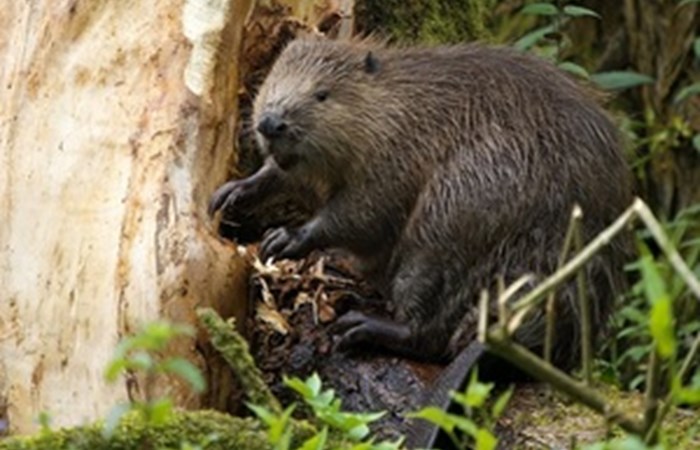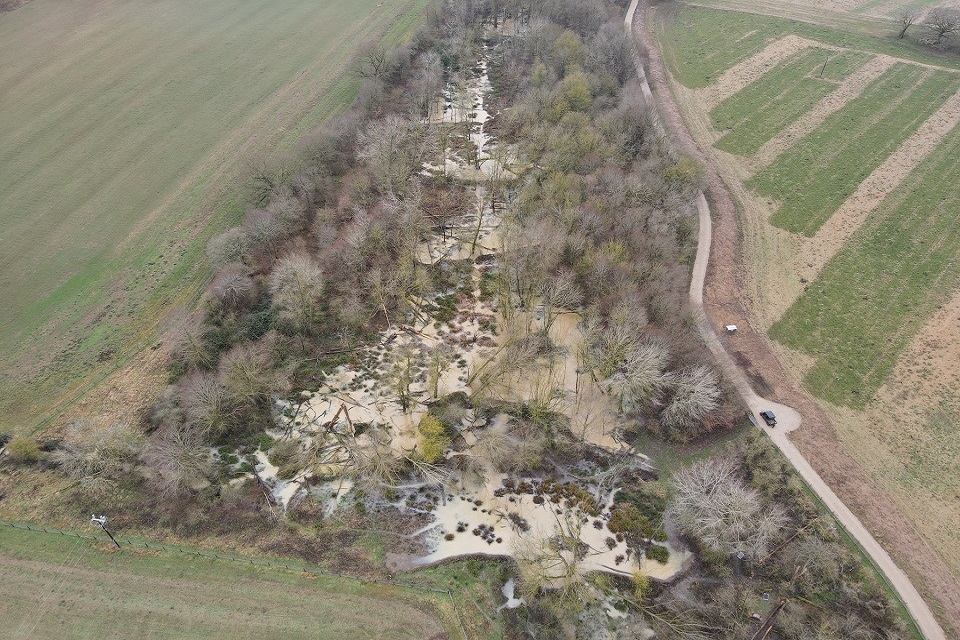Environment Agency

A project to reintroduce beavers to East Anglia has successfully reduced the impact of flooding and drought by storing millions of litres of water over 5 years.
Five years ago, Spains Hall Estate in Essex and the Environment Agency released the first pair of beavers in East Anglia for more than 400 years. With free reign across a 10-acre woodland stream, the beaver family, now numbering 11, has created 9 dams. These are estimated to store 3 million litres of water in ponds covering almost a quarter of the woodland.
An animation produced by catchment-scientists from AtkinsRalis reveals the scale and speed of the changes occurring over 5 years.
Data collected by Kings College London demonstrates that the way water flows across the farm has also changed. The beavers increasingly building bigger dams to trap more water each time it rains. These changes mean that storm water flows downstream more slowly, some even being held for several months as its slowly released back into the river. This helps alleviate low river water levels in summer.
Matt Butcher, local Environment Agency catchment manager, said:
We are delighted that the beavers have thrived and improved the landscape. Their work has demonstrated that nature-based solutions can be used to tackle challenges in smaller river catchments. We initially supported this work as a pilot study and have been really impressed with the results.
We have since helped the estate scale-up their beaver activity through more direct support, along with other partners. This has enabled the construction of two much larger beaver enclosures.

The original woodland stream has been transformed in numerous ponds, estimated to store 3 million litres of water. Photo: Spains Hall Estate
Molly Howell, an assistant environmental scientist at AtkinsRalis, which produced the animation, said:
The animation is such a powerful tool to convey such a dramatic change in a simple way. The chance to track beaver-led changes over such a long time has been a great opportunity for us. It means we have real-life insights that we can use to support both the Estate and their partners, but also bring to our wider work.
Its a great example of how were able to use digital tools within a natural environment. This enhances our understanding of whats happening on the ground, so we can use that data to better inform how we support the project.
Archie Ruggles-Brise, Spains Hall estate manager, said:
This is a massive milestone for us. We took a chance 5 years ago that bringing beavers back would be beneficial, and its proven to be better than we could ever have imagined. Locally, there is widespread support for the beavers and their work, with the community really taking them to their heart. You can even find beaver greetings cards, beaver beer and beaver-themes on local menus!
Background
Keystone species:
- Beavers are a keystone species in wetland ecology. They create ecosystems that provide habitats for many other plant, insect and mammal species. Few other animals, aside from humans, have the ability to so drastically modify and shape their surrounding environment.
- For this reason, beavers are often referred to as ecosystem engineers. Beavers are well-known for their ability to fell trees to dam shallow watercourses and create pools to make them feel safe.
- The associated wetlands, interconnecting beaver canals, coppiced woodland, glades and deadwood provides rich and diverse habitat for an abundance of wildlife. This includes plants, insects, amphibians, reptiles,
